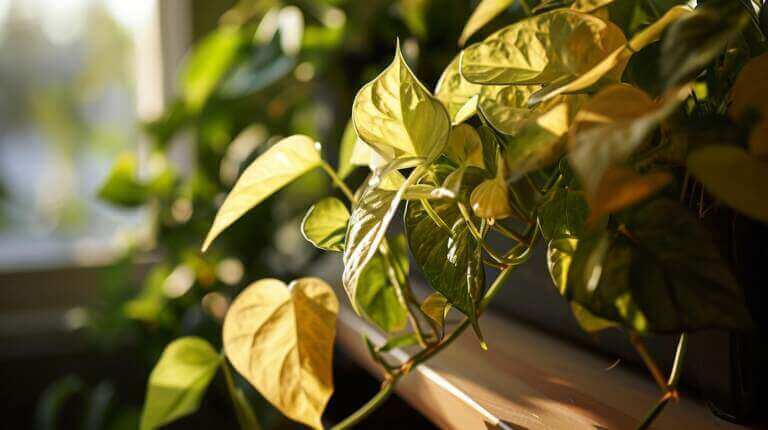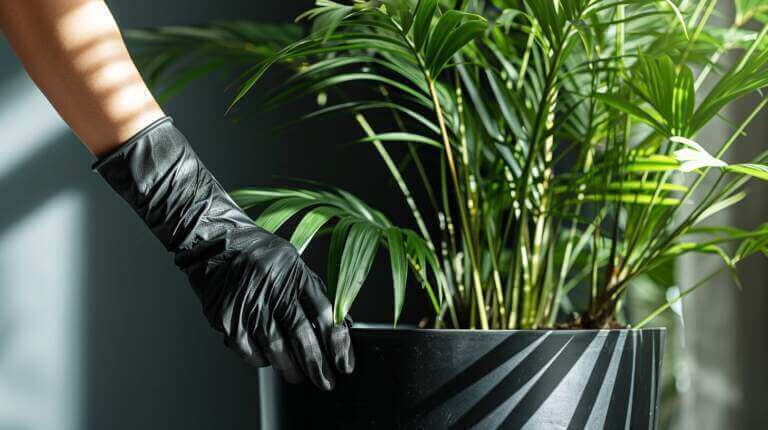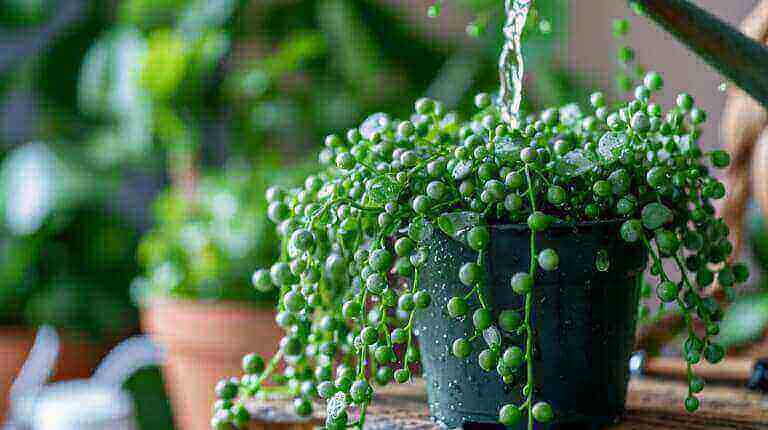According to a recent study, bottom watering has become a popular technique for nurturing Chinese Evergreen plants, known for their vibrant foliage and air-purifying properties.
This article aims to provide detailed guidance on whether bottom watering is suitable for Chinese Evergreen plants and offers essential safety tips for optimal plant care.
By understanding the benefits, watering needs, and step-by-step instructions for bottom watering, you can ensure the health and longevity of your Chinese Evergreen plant while creating a serene and inviting space.
Key Takeaways
- Bottom watering promotes deep root growth and reduces the risk of overwatering.
- Signs of underwatering include wilting leaves and slow growth, while signs of overwatering include dry and crispy leaves.
- Misting Chinese Evergreen plants increases humidity and minimizes the risk of overwatering.
- To safely bottom water Chinese Evergreen plants, use well-draining soil, pots with drainage holes, and check the moisture level of the soil regularly.
Benefits of Bottom Watering for Chinese Evergreen Plants(Aglaonema)
One of the key benefits of bottom watering for Chinese Evergreen plants is that it promotes deep root growth and prevents overwatering.
Bottom watering is a watering technique where water is added directly to the saucer or tray beneath the plant’s pot, allowing the roots to absorb water as needed. This method ensures that the water reaches the roots directly, encouraging them to grow deeper into the soil.
By avoiding overhead watering, which can lead to excess moisture on the leaves and stems, bottom watering helps prevent overwatering and the risk of root rot. This technique also allows the plant to take up water more efficiently, reducing the risk of waterlogging and promoting overall plant health.
Understanding the benefits of bottom watering is crucial in understanding the watering needs of Chinese Evergreen plants.
Understanding the Watering Needs of Chinese Evergreen Houseplant
Understanding the appropriate watering regimen for Chinese Evergreen plants is essential for their optimal growth and health. These plants have specific watering needs that must be met in order to avoid overwatering risks or signs of underwatering. Chinese Evergreen plants prefer to be kept slightly moist, but not overly wet. Overwatering can lead to root rot and other issues, while underwatering can cause the plant to wilt and become stressed. To help you understand the watering needs of Chinese Evergreen plants, refer to the table below:
| Watering Needs | Signs of Underwatering |
|---|---|
| Slightly moist soil | Wilting leaves |
| Water when top inch | Dry and crispy leaves |
| of soil is dry | Slow growth |
Step-by-Step Guide to Bottom Watering Your Chinese Evergreen Plant
Implementing the proper technique of bottom watering is crucial for effectively nourishing your Chinese Evergreen plant. This method involves watering the plant from the bottom rather than from the top, allowing the roots to absorb water as needed.
Here is a step-by-step guide to bottom watering your Chinese Evergreen plant:
- Choose a suitable container: Select a container with drainage holes to prevent water from pooling at the bottom and causing root rot.
- Fill a tray or saucer with water: Place the container on a tray or saucer filled with water. Ensure that the water level is not higher than the drainage holes.
- Allow the plant to soak: Let the plant sit in the water for about 30 minutes or until the topsoil feels moist to the touch.
- Remove excess water: After the allotted time, remove the plant from the water and allow any excess to drain out.
Benefits of misting Chinese Evergreen plants can also be considered as an alternative watering method. Misting helps to increase humidity, which is beneficial for these plants.
However, bottom watering remains the preferred method as it ensures the roots receive adequate hydration while minimizing the risk of overwatering.
Common Mistakes to Avoid When Bottom Watering Chinese Evergreen Plants
What are some common mistakes to avoid when bottom watering Chinese Evergreen plants?
Proper watering techniques are crucial for the health and growth of these plants. Here are some common mistakes to avoid:
- Overwatering: Chinese Evergreen plants prefer slightly moist soil, but overwatering can lead to root rot. Make sure to allow the top inch of soil to dry out before watering again.
- Using cold water: Chinese Evergreen plants are sensitive to temperature changes. Avoid using cold water, as it can shock the roots and damage the plant. Use room temperature or slightly warm water instead.
- Neglecting drainage: It is important to ensure that the pot has proper drainage holes to allow excess water to escape. Without adequate drainage, the plant’s roots can become waterlogged and suffocate.
Safety Tips for Bottom Watering Chinese Evergreen Plants
To ensure the well-being of your Chinese Evergreen plant while bottom watering, it is essential to follow these safety tips.
Firstly, it is crucial to prevent overwatering, as this can lead to root rot and other issues. One tip to prevent overwatering is to use well-draining soil and pots with drainage holes. This allows excess water to escape and prevents waterlogged roots.
Additionally, it is important to pay attention to the signs of underwatering, such as wilting leaves, yellowing, or dry soil. To avoid underwatering, check the moisture level of the soil regularly and water when the top inch feels dry.
Frequently Asked Questions
How Often Should I Bottom Water My Chinese Evergreen Plant?
When it comes to bottom watering a Chinese Evergreen plant, it is recommended to do so approximately once a week. This frequency ensures that the roots receive sufficient moisture without becoming waterlogged.
Bottom watering has several benefits for Chinese Evergreen plants, including promoting healthy root growth and preventing the development of fungal diseases. By allowing the plant to take up water from the bottom, it encourages the roots to grow deeper and establish a strong foundation.
Can I Use Tap Water for Bottom Watering My Chinese Evergreen Plant?
When considering bottom watering a Chinese Evergreen plant, it is important to consider the type of water being used. Tap water can have varying effects on plants due to the presence of chemicals such as chlorine and fluoride.
However, the benefits of bottom watering include promoting root growth and preventing overwatering.
To ensure the health of your Chinese Evergreen, it is recommended to use filtered or distilled water for bottom watering to avoid any potential negative effects from tap water.
What Is the Best Time of the Day to Bottom Water My Chinese Evergreen Plant?
The best time of day to bottom water a Chinese Evergreen plant is in the morning, when the soil has a chance to absorb the water before the heat of the day. This allows for optimal hydration and nutrient absorption.
Bottom watering, a best practice in plant care, offers several benefits such as preventing overwatering and promoting healthy root growth.
Can I Use Fertilizer When Bottom Watering My Chinese Evergreen Plant?
When bottom watering a Chinese Evergreen plant, it is important to consider the application of fertilizer. While bottom watering can be an effective way to hydrate the plant’s roots, caution must be exercised when using fertilizer in this process.
Applying fertilizer directly to the water can potentially lead to over-fertilization and cause harm to the plant. It is recommended to consult the plant’s care instructions or a horticulturist to determine the appropriate method and timing for fertilizer application to avoid any potential risks.
Can I Use a Deep Saucer or Tray Instead of a Shallow Dish for Bottom Watering My Chinese Evergreen Plant?
When it comes to bottom watering a Chinese Evergreen plant, using a deep saucer or tray instead of a shallow dish can be a viable option. This watering technique allows the plant to absorb water from the bottom up, promoting healthy root growth.
A deep saucer or tray provides more water capacity, reducing the frequency of refilling. However, it is important to ensure proper drainage to prevent overwatering and root rot. Regularly check the saucer or tray to ensure that excess water is not sitting stagnant.







